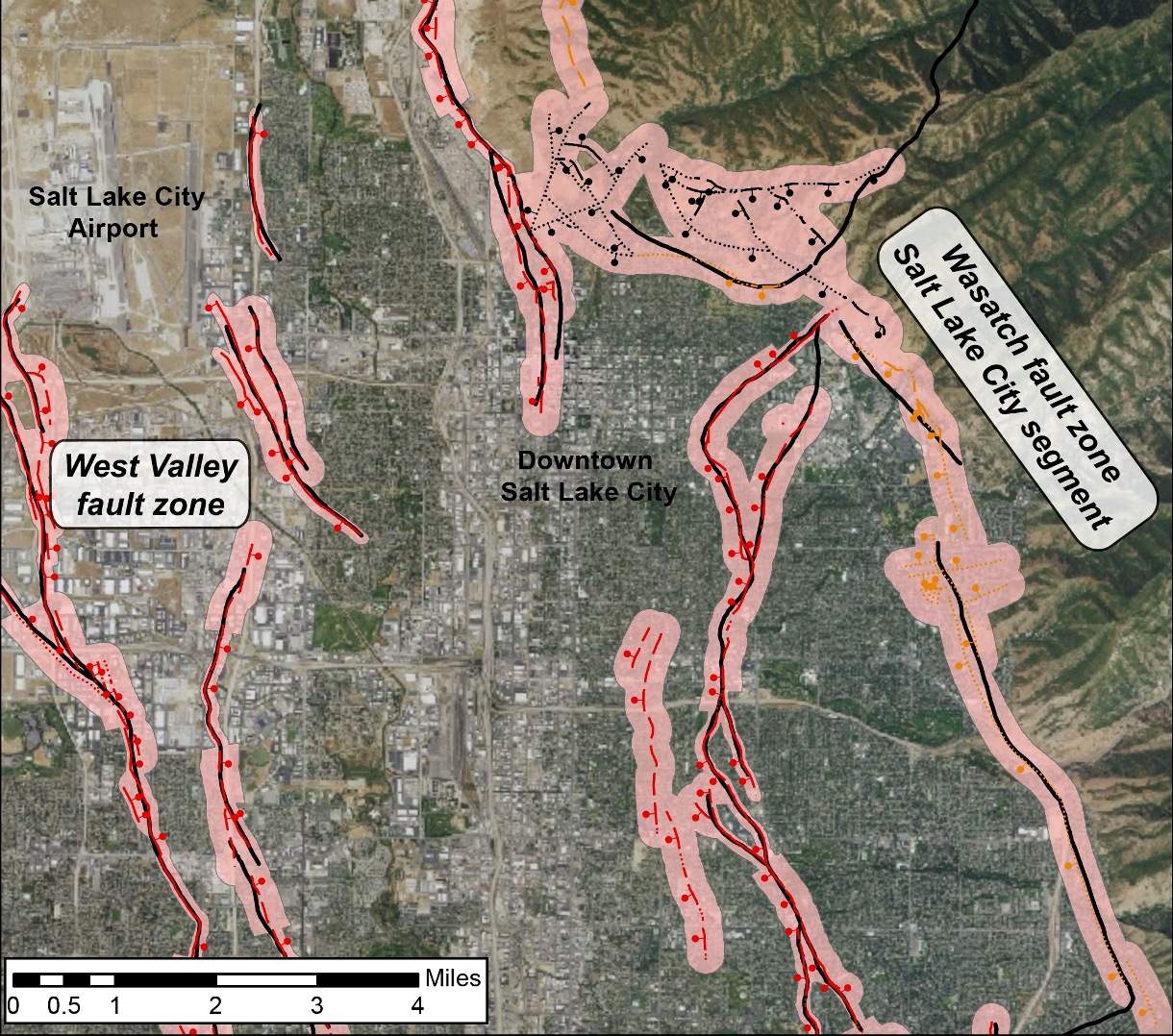Geologic Significance: New Fault Line In Wyoming

The formation of the new fault line in Wyoming is a significant geologic event that provides valuable insights into the dynamic processes shaping the Earth’s crust.
This fault line is the result of tectonic forces acting on the North American Plate. The convergence of the Pacific Plate with the North American Plate along the San Andreas Fault system has created a zone of crustal weakness in the western United States, making it susceptible to faulting.
Location and Characteristics, New fault line in wyoming
The new fault line is located in the western part of Wyoming, approximately 50 miles east of the Idaho border. It extends for a length of approximately 100 miles, with a depth estimated to be several kilometers. The fault is characterized by a strike-slip motion, indicating that the rocks on either side of the fault have moved horizontally past each other.
The newly discovered fault line in Wyoming serves as a poignant reminder of the Earth’s ever-shifting nature. Just as the sun and Mercury’s celestial dance influences our astrological destiny, so too do these geological events shape our physical landscape. The Wyoming fault line, a testament to the Earth’s resilience, will undoubtedly continue to impact the region’s topography for centuries to come.
Seismic Activity
The presence of a fault line raises concerns about the potential for seismic activity. While the new fault line is not expected to generate major earthquakes, it could produce smaller seismic events. The frequency and magnitude of these earthquakes will depend on the rate of strain accumulation along the fault and the strength of the surrounding rocks.
The newly discovered fault line in Wyoming serves as a stark reminder of the Earth’s ever-changing nature. Its implications for the region’s geology and seismic activity are still being explored. Yet, amidst this scientific intrigue, the debate over the pros and cons of the WNBA continues to stir the sporting world.
Weighing the merits and drawbacks of this league is a fascinating exercise in evaluating the role of women in sports. However, as we delve deeper into the Wyoming fault line’s significance, it’s essential to remember that the Earth’s tectonic shifts are a constant force, shaping our planet’s landscape and reminding us of the interconnectedness of all things.
Environmental Impact

The presence of a fault line can significantly alter the surrounding ecosystem. Understanding the potential impact on water resources, wildlife habitats, and vegetation is crucial for developing mitigation strategies and ensuring the long-term health of the environment.
One of the primary concerns is the impact on water resources. Fault lines can disrupt groundwater flow patterns, leading to changes in water availability and quality. Springs and wells may be affected, impacting both human and wildlife populations. Additionally, surface water bodies can be altered, affecting aquatic ecosystems and downstream water users.
Wildlife Habitats
Fault lines can fragment wildlife habitats, disrupting movement patterns and access to food and water sources. This can lead to population declines and changes in species composition. Sensitive species and those with limited mobility are particularly vulnerable to these impacts.
Vegetation
Vegetation can be affected by changes in soil conditions and water availability caused by fault lines. Some plant species may thrive in the altered environment, while others may struggle to adapt. This can lead to shifts in plant communities and the loss of certain vegetation types.
Mitigation Measures
To mitigate the negative environmental consequences of fault lines, various measures can be implemented. These include monitoring groundwater and surface water resources, implementing land use planning to minimize development in sensitive areas, and restoring and protecting wildlife habitats.
Socioeconomic Implications

The presence of a new fault line in Wyoming has far-reaching socioeconomic implications, affecting nearby communities, infrastructure, property values, and tourism.
The proximity of the fault line to residential areas and critical infrastructure raises concerns about potential damage and disruption in the event of an earthquake. The risk of ground shaking, liquefaction, and landslides poses significant threats to buildings, roads, bridges, and other structures.
Impact on Communities
Nearby communities may experience population decline as residents relocate to safer areas. The fear of earthquakes and the potential for property damage can lead to a decrease in property values, making it difficult for homeowners to sell their properties or obtain insurance.
Furthermore, the disruption of infrastructure can hinder access to essential services such as healthcare, education, and transportation. This can have a negative impact on the quality of life for residents and businesses in the affected areas.
Economic Consequences
The economic consequences of the fault line can be substantial. The potential for earthquake damage can deter businesses from investing in the area, leading to job losses and a decline in economic activity. Additionally, the disruption of tourism due to safety concerns can further impact the local economy.
Property values in areas near the fault line may decline, resulting in financial losses for homeowners and investors. The cost of earthquake insurance and retrofitting buildings to meet seismic safety standards can also impose a significant financial burden on property owners.
Role of Government Agencies and Local Organizations
Government agencies and local organizations play a crucial role in addressing the socioeconomic implications of the fault line. They can implement policies and programs to mitigate the risks, support affected communities, and promote economic recovery.
Zoning regulations and building codes can be revised to ensure that new construction meets seismic safety standards. Government agencies can also provide financial assistance to homeowners and businesses for earthquake retrofitting and repairs.
Local organizations can work with communities to develop emergency preparedness plans, provide education and outreach programs, and advocate for policies that protect residents and businesses from the impacts of earthquakes.